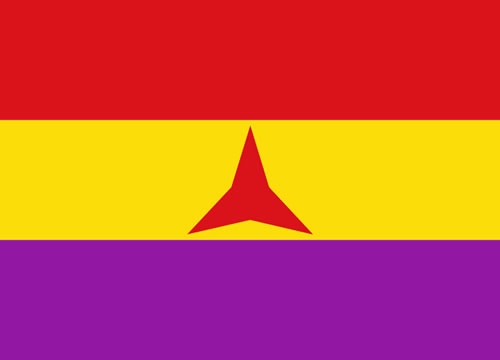i know a good number of us have been listening to Hell on Earth and while it’s been a decent primer for the sequence of events—the takes are quite spicy for historiography heads
here are the questions for the class:
What is Feudalism?
When did Feudalism End?
Good answers here already. I would add that feudal society is characterized by peasants being bound to the land. They aren’t allowed to leave except with permission. Unlike in the slave mode of production, peasants cannot be bought or sold individually; only the land they live on can be bought, sold, or seized. They also keep about half of what they produce; the lord and the church take the other half. Contrast with the proletariat under capitalism, which loses 99%+ of the value it produces, spending its wages exclusively at businesses owned by the bourgeoisie.
There seems to be some debate over whether peasants owned their means of production, but I would lean toward saying that they didn’t—that they rented from the lords, but with conditions that would look pretty lenient but also draconian by our standards (i.e., you can rent this land for a century at a fixed rate, but you can’t leave, and you have to fight by my side during the summer if I ask you to). Rents were almost always paid in kind until the 1300s IIRC.
Feudalism is also an upgrade in the productive forces versus slavery, but it still takes quite a long time to really get going (though slavery took even longer). It begins in what we call western Europe with the fall of the Western Roman Empire, but doesn’t really start expanding or getting aggressive until the 11th century via the Crusades, the Norman conquest of Arab Sicily, and the Reconquista in Spain. Feudalism has a completely different ideological superstructure compared to slavery: monotheism instead of polytheism, kings and lords and priests being sanctioned by god rather than being gods themselves (the Pharaoh was considered a god, for instance; Caesar claimed descent from Venus and Roman emperors were often treated like gods). Feudalism also has guilds (sort of like unions, but with a heavy family basis and a lot of child exploitation, correct me if I’m wrong here hexbears), which slavery lacks.
Feudalism’s economic base is extremely rural, whereas the slave mode of production actually ends up producing massive thriving cities (Rome, Athens, Memphis) with a lot of infrastructure (Roman highways) and enormous architectural projects (the pyramids, the Coliseum). Feudalism, however, chills out the underclass by granting them some concessions both on Earth and in heaven (where they can go so long as they behave on Earth), so uprisings are less of an issue, at least until feudalism starts to fall apart, turning into capitalism in England and absolutism in Spain and France.
The Hundred Years’ War and the Bubonic Plague are caused by feudalism’s contradictions and likewise bring about its destruction in England, which begins the transition to agrarian capitalism following these cataclysms. Those lenient rents ended up being a huge boon for some feudal tenants—the first capitalists—who made shitloads of money by enclosing land, driving off peasants, and replacing them with more profitable sheep.
Under feudalism, almost all economic activity is undertaken in the name of use rather than exchange. Peasants were mostly self-sufficient. Markets existed but did not dominate society, as with capitalism—they took place every now and then in towns and were mostly concerned with luxury goods, buying cheap and selling dear, and carrying goods over long distances in order to profit. Capitalism is a whole different beast with its relentless focus on market imperatives: if you own capital, you improve it (improve literally means to make it more profitable) or you get proletarianized.
Modes of production is an aspect of Marxism that I’ve found extremely useful for writing historical fiction. Something I learned that helped a lot was the fact that different modes of production can coexist with one another. One is always dominant, but others can still be present. Feudalism and capitalism coexisted (and arguably still coexist with regard to the monarchy) in England; the mode of production used in the Confederacy is itself some weird shitstorm of slavery, feudalism, and capitalism all mixed together; capitalism still makes use of slavery in prisons as well as feudalism on the margins of empire (debt slaves in Obama-era Afghanistan for instance, the under-development of places like Africa and the Philippines). Also, techno neo-feudalism is just a buzzword as far as I can tell.
I’m getting this information from Wood’s The Origin of Capitalism, Federici’s Caliban and the Witch, and Marx’s Capital. I’m pretty interested at the moment in medieval Italian city states like Venice, Florence, Pisa, and Genoa. (A historian named Lauro Martines has a really interesting book about them.) At first glance these seem to be using the capitalist mode of production—the term “urban proletariat” is used by historians even when referring to workers in ancient Rome, Venice had a massive factory called the Arsenal which produced shitloads of ships, Florence had the Ciompi Revolt—but if you apply Wood’s analysis, it looks like these cities are actually just using a unique sort of flavor of feudalism, since you get rich in these places not necessarily by having a business, but by being connected to the government and by investing in feudal lands. This is much less the case under capitalism. In the cities I’ve mentioned, profit is also made from buying cheap and selling dear over long distances rather than relentless improvement of the forces of production. Economic imperatives are also less present: workers do not always necessarily need to work for a wage in order to survive, they still have access to the commons and could perhaps return to the countryside, etc.
how does the slave economic mode become the feudal economic mode ?
Labor shortage and contradictions involving extended supply chains. Eventually you run out of slaves and your smaller regional landowners figure out they can save money by making their underclasses reproduce with one another. Just bind them legally to your land and there you go. That’s cheaper than constantly funding military expeditions, training the slaves, and then working them to death just to go catch more slaves.
Fun fact, the world “proletariat” comes from the Latin word “prole” which means offspring. Like it’s your underclass that reproduces itself.
Rome expanded as far as it could go (its borders were vast oceans, deserts, and forests) before it was torn apart by civil wars and barbarian invasions. The result was feudalism in the west and Byzantium and Islam in the east. These latter two civilizations used modified forms of the slave mode of production.
“Feudalism” is a weird and controversial topic for historians because at least recently there’s been a move to declare that “feudalism was never an actual thing” that revolves specifically around debunking the general pop culture idea of it but then expands to argue that because of the extreme difference in styles of government and laws across Europe alone - let alone every country that is often described as “feudal” - and between the earliest period that could be considered medieval and the early modern/modern period when “feudalism” was replaced with a more bourgeois monarchism and nationalism, that you cannot group these disparate things under one umbrella like “feudalism” at all.
I disagree and think those historians are a bunch of pedantic liberals losing the forest for the trees. They’re correct in that you cannot describe any specific set of standards, laws, or systems between feudal entities, but they’re wrong in that specifically that sort of legalistic chaos where ultimately power was held based on hereditary titles, properties, and court politicking by warlords whose capacity for violence may or may not actually have been relevant at a given time should probably be considered a general thing that happens. You can’t say “ah yes in a feudal system you have exactly [list of titles] and they definitely follow this [list of laws]” but you can say “so a bunch of inbred fucks owned everything and ruled based on owning everything, and no no it’s quite different from our own system where a bunch of idle bastards own everything and rule based on owning everything because back then you needed a dozen generations of inbreeding to be allowed to own more than a house, and back then they had to launder their rule through a bunch of crony clergymen as compared to now when they launder their rule through crony politicians and propaganda rags!”
disagree and think those historians are a bunch of pedantic liberals
i mean its useful to explore the difference between medieval economoc/political arrangements and ‘modern’ ones. the simple fact we have a ruling class still doesn’t mean the character, origins, and activities of the modern one diverges sharply from the old ruling class. and the old ruling class was in most places violently overthrown.
the “Tyranny of a Concept” historiographers aren’t exactly doing hagiography for shitty class society they’re just pointing out what happened doesn’t map well onto the theoretical models
There I’m specifically criticizing something I’ve seen a lot where historians attack a specific romanticized fantasy idea of feudalism as purely fictional in order to dismiss the entire concept or pretend that anytime someone says “feudalism” what they mean is this specific fiction that exists in the mind of pop culture fantasy consumers.
I did sort of lose focus and switch from contrasting feudalism from bourgeois dictatorships to comparing them mid sentence after that, which I will defend by saying the site went down for me after I hit “post” so I couldn’t fix the jumbled rhetoric after rereading and didn’t even get confirmation it had posted until over an hour later.
which I will defend by saying the site went down for me after I hit “post” so I couldn’t fix the jumbled rhetoric after rereading and didn’t even get confirmation it had posted until over an hour later
the posti ng experience on this day lmao
It’s complicated and sometime in the 20th century.
It’s complicated
cheater :farquaad-point:
Fun fact: The A*glo island of Sark had feudalism until 2008
It’s a complicated question to answer. For a simple definition of “how if feudalism different that capitalism?” the answer comes down to monopoly on violence. A precondition for bourgeoisie capitalism is that the state will in theory protect property rights. A capitalist who owns a factory is not allowed to invade a rival factory and take over his stuff, the system wouldn’t work that way. (Capitalists are allowed to use violence to oppress the peasants or workers, but not other capitalists). So capitalists compete with eachother through “peaceful” means, trying to get more profit than other capitalists. This lets them buy out rival factories or drive rivals out of business. But they can’t send men with weapons.
When we look at European feudalism in the middle ages, the feudal lords were constantly investing in profit making ventures. They bought mills, bridges, and all the land they could. The difference is they didn’t invest in profit-saving technology, like bourgeoisie. That’s because another feudal lord was likely to invade their land, burn their stuff. Or the peasants could take their stuff. So lords invested in military to help protect their investments. A castle would help defend that mill from raids. Paying for knights and their horses and armor made it so you could defend your land better, or invade a neighbor. If you invested money into a factory, you would get nothing back if your neighbor invaded and burned it down.
Bourgeoisie need a powerful central state to mediate between classes, namely a central army and police to protect property. When the bourgeoisie didn’t have to worry about spending money on defending their stolen land/resources, they were able to invest in labor saving technology. Feudal lords didn’t invest in labor saving technology, they just bought more land. If the peasants got killed, you just had to get more peasants.
That’s why I generally reject the label “neofeudalism” to describe the growing monopolies and oligopoly corporations. Until Pepsi starts invading Coca Cola to take over their factories, it’s not really feudalism.
Err I believe the main reason feudal lords didn’t have factories was because they didn’t have the tools to make factories… for many it was literally cottage industry
“Factories” was a shorthand for productive technology. And in fact some did actually have factories. Lords in the Crusader states were heavily invested in sugarcane production, which was processed in urban settings within a broad factory-like setting.
But I could have said that “medieval European lords didn’t invest in the labor reducing technology which was available at the time”, primarily spinning looms, beer brewing, kilns, and other artisan used technology. Wool was a growing industry in northern Europe, particularly the Netherlands, England, and parts of Germany. However, processing wool to make full use of it required many labor inputs, which were generally done in cities. Lords from the countryside sold their wool and the nascent bourgeoisie processed it. Weavers, dyers, fullers, etc. all had their own technological needs and bourgeoisie owners of these shops formed Guilds to protect their needs. Guilds were not proletarian run, they were ways for artisans to protect their profits through price fixing against the noble elite who generally ran the government. Guild leaders, especially in the wool industry, tended to own the means of production and rented them out to the people who did the actual labor. These Guild leaders eventually succeeded in getting enough influence to getting their own government representation in the form of City Councils and communes.
My main point in the larger post is that because ownership of property in the medieval world was not protected by the government police or army, medieval lords had to invest in protecting their property themselves. Bourgeoisie are able to invest in labor saving technology like factories because they don’t have to bare the large cost of protecting their property, the state oughta do it for them. In fact bourgeoisie created Guilds and City Councils to protect their investments from the nobles encroaching. By the time of the modern period, the kingdoms of France and England successfully monopolized the use of violence within their countries. Bourgeoisie were then able to expand more freely without worry that their neighbor lord fuckwad would come in and steal or burn their property.







